Not much in the way of a cruise night this past week but a great opportunity to once again tour the Walter P Chrysler Museum
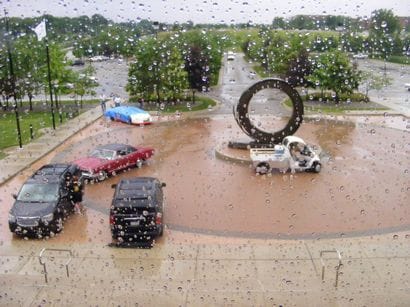
Purple Rain
The Chrysler Museum’s second cruise night turned out to be a wet one. By the time I rolled into the parking lot nearly a half hour after the event was scheduled to start, the sky was various shades of dark grey and the rain was coming down in torrents.
After waiting fifteen minutes or so for the rain and corresponding flood to subside, I ventured out of my car, down the walk to the circle drive in front and finally into the Chrysler Museum.

American Graffiti
Once inside, I was greeted by a myriad of volunteers, eager to please anyone who was determined enough to come out to a cruise night in this kind of weather.
One of the perks of coming to the museum on a cruise night is that the normal $8 adult admission is reduced to just $2. Since the weather was still nasty outside, I immediately took advantage of this situation and started my own self-guided tour – the results of which you’ll see below.
Since the museum’s collection of vehicles outstrips its display space by a wide margin, nearly every time you visit you’ll see a dozen or so new vehicles. This year’s special event is the rotating “70 Years of Jeep” exhibit which, along with the normal sprinkling of cars and trucks, brings a special emphasis to this Chrysler brand.
So here we go.
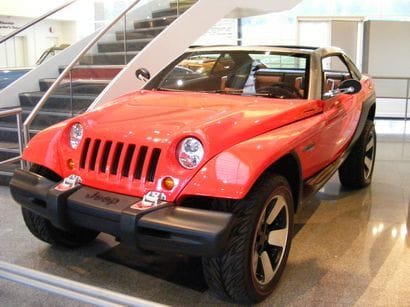
1998 Jeep Jeepster Concept
The Jeep Jeepster concept was the result of the Jeep design studio’s initiative to create a crossover vehicle.

Featuring an electronic four-wheel independent, adjustable suspension that can lower the vehicle four inches and adjust the attitude for a more aerodynamic ride on road (5 ¾”) or off (9 ¾”). The two-plus-two also features a four-speed automatic Quadra-Trac II transmission and an aluminum skid plate integrated into the side sill.
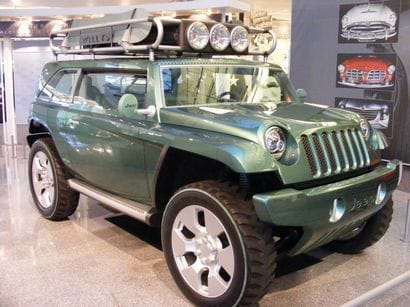
2001 Jeep Willys II Concept
This design exercise features plastic body technology that saves in both manufacturing costs and up to 50% in weight. Featuring a custom suspension and supercharged powertrain, the body is nearly 100 percent recyclable.

1941 Dodge Command Car
Built in 1941 to military specifications, the Dodge Command Car was configured to carry a driver, radio equipment and the maps and plans necessary to keep a senior U.S. Army officer in contact with his troops – and mobile on the most challenging battlefield terrain.
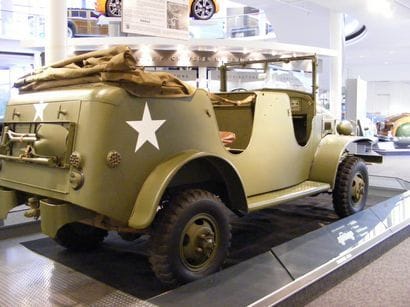
An interesting side note: the Dodge Division produced more than half a million military vehicles of all types during World War II.
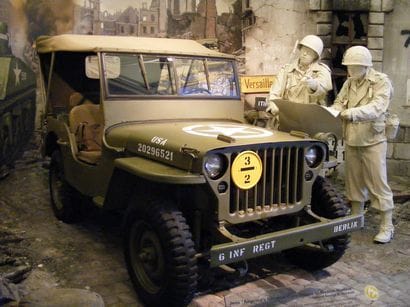
1943 Jeep MB
The MB model reflected design changes in the original MA requested by the Army. Willys-Overland ultimately built 368,714 MBs between 1941 and 1945. Because of concerns about accidents or sabotage, the company was also asked to license production of the MB by Ford, which built an addition 277,896 GPWs (what Ford called them) for a total of 646,610.












